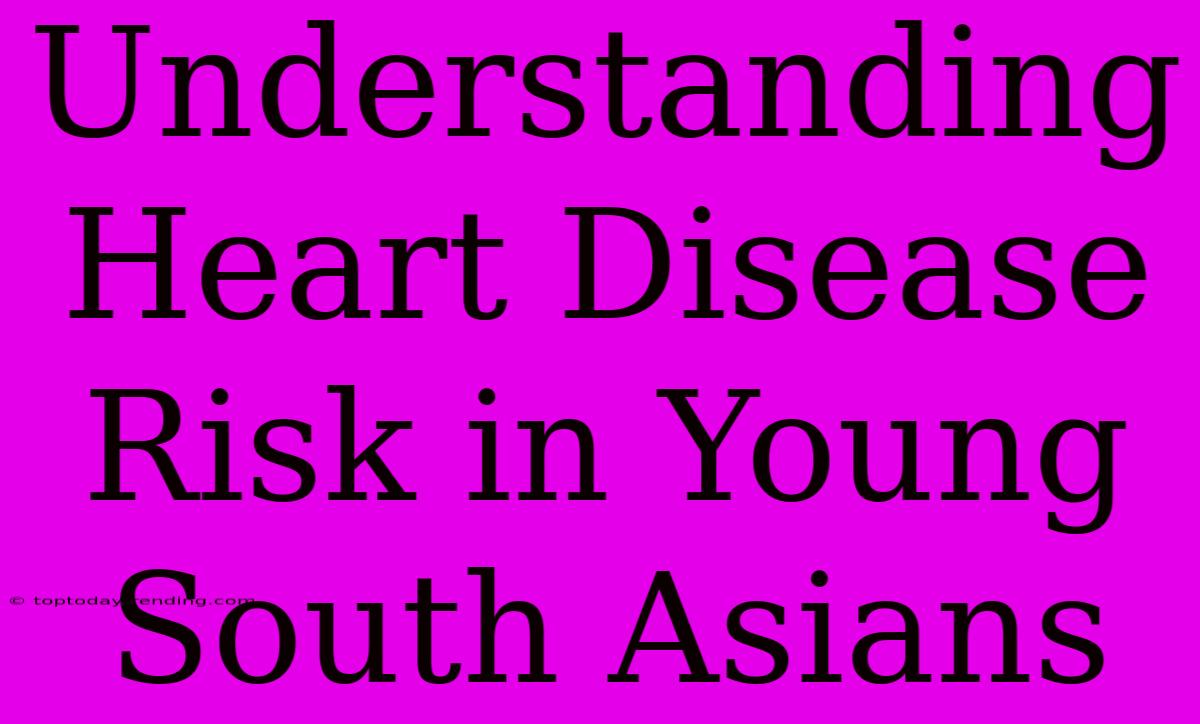Understanding Heart Disease Risk in Young South Asians
Heart disease, once considered an ailment of the elderly, is now increasingly affecting young South Asians. This trend, alarmingly prevalent, necessitates a deeper understanding of the factors contributing to this growing risk.
The Alarming Rise of Heart Disease in Young South Asians
While heart disease remains a significant public health concern globally, its impact on young South Asians stands out. Studies have shown that South Asians experience heart attacks and strokes at a younger age and often with fewer traditional risk factors like high cholesterol or smoking. This phenomenon, known as the "South Asian Paradox," highlights the unique vulnerabilities of this population group.
Why Are Young South Asians at Higher Risk?
Several factors contribute to the increased risk of heart disease in young South Asians:
1. Genetics:
- Metabolic Syndrome: South Asians are more susceptible to metabolic syndrome, characterized by a cluster of conditions like high blood pressure, high cholesterol, high blood sugar, and abdominal obesity. These conditions, often occurring together, significantly elevate heart disease risk.
- Genetic Predisposition: Research suggests that South Asians may possess certain genetic markers linked to a higher risk of heart disease.
2. Lifestyle and Environmental Factors:
- Diet: South Asian diets, often rich in carbohydrates and saturated fats, can lead to increased cholesterol levels and weight gain, contributing to heart disease.
- Physical Activity: Lower levels of physical activity, a common trend in urban South Asian populations, can also raise the risk of heart disease.
- Stress: High-stress lifestyles are prevalent in many South Asian communities, potentially leading to hormonal imbalances that contribute to cardiovascular issues.
3. Socioeconomic Factors:
- Limited Access to Healthcare: Socioeconomic disparities can limit access to affordable healthcare, delaying early detection and intervention for heart disease.
- Cultural Beliefs: Certain cultural beliefs, such as a preference for traditional remedies over modern medicine, may delay seeking medical attention, further increasing the risk.
What Can Be Done to Reduce the Risk?
1. Awareness and Education:
- Early Screening: Regular medical check-ups and screenings for heart disease risk factors, starting from a young age, are crucial for early detection and intervention.
- Promoting Healthy Habits: Educating communities about healthy lifestyle choices, including diet, physical activity, and stress management, is paramount.
2. Lifestyle Modifications:
- Adopt a Healthy Diet: Focus on reducing saturated fat intake, increasing fiber consumption, and incorporating a variety of fruits and vegetables.
- Engage in Regular Exercise: Aim for at least 30 minutes of moderate-intensity physical activity most days of the week.
- Manage Stress: Utilize stress management techniques like meditation, yoga, or deep breathing exercises.
3. Seeking Medical Advice:
- Consult a Healthcare Professional: Consult with a doctor about your individual risk factors and discuss appropriate preventive measures.
- Medication: If necessary, taking prescribed medications, like statins to lower cholesterol or antihypertensives to control blood pressure, can effectively manage risk factors.
4. Community Support and Advocacy:
- Raising Awareness: Initiating public health campaigns and advocating for policies that promote healthy lifestyles and address socioeconomic inequalities can play a significant role in tackling the issue.
Conclusion:
The increasing prevalence of heart disease in young South Asians is a pressing concern demanding immediate attention. Understanding the complex interplay of genetic, lifestyle, and socioeconomic factors is key to addressing this challenge. By embracing preventative measures and promoting a holistic approach to health, we can empower individuals and communities to reduce their risk and create a healthier future.

